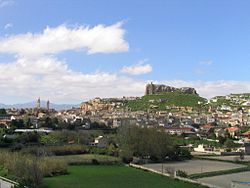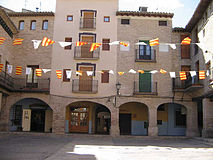
Alfonso I, called the Battler or the Warrior, was King of Aragon and Navarre from 1104 until his death in 1134. He was the second son of King Sancho Ramírez and successor of his brother Peter I. With his marriage to Urraca, queen regnant of Castile, León and Galicia, in 1109, he began to use, with some justification, the grandiose title Emperor of Spain, formerly employed by his father-in-law, Alfonso VI. Alfonso the Battler earned his sobriquet in the Reconquista. He won his greatest military successes in the middle Ebro, where he conquered Zaragoza in 1118 and took Ejea, Tudela, Calatayud, Borja, Tarazona, Daroca, and Monreal del Campo. He died in September 1134 after an unsuccessful battle with the Muslims at the Battle of Fraga.
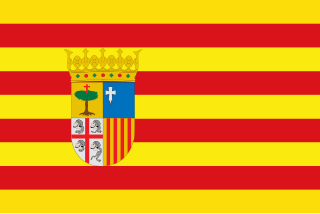
Aragon is an autonomous community in Spain, coextensive with the medieval Kingdom of Aragon. In northeastern Spain, the Aragonese autonomous community comprises three provinces : Huesca, Zaragoza, and Teruel. Its capital is Zaragoza. The current Statute of Autonomy declares Aragon a historic nationality of Spain.

Ramiro I was the first King of Aragon from 1035 until his death, although he is sometimes described as a petty king. He would expand the nascent Kingdom of Aragon through his acquisition of territories, such as Sobrarbe and Ribagorza, and the city of Sangüesa. Sancho Ramírez, his son and successor, was King of Aragon, but also became King of Pamplona.

Zaragoza, also called Saragossa in English, is a province of northern Spain, in the central part of the autonomous community of Aragon. Its capital is the city of Zaragoza, which is also the capital of the autonomous community. Other towns in the province include La Almunia de Doña Godina, Borja, Calatayud, Caspe, Ejea de los Caballeros, Tarazona, and Utebo.

The Kingdom of Navarre, originally the Kingdom of Pamplona, was a Basque kingdom that occupied lands on both sides of the western Pyrenees, with its northernmost areas originally reaching the Atlantic Ocean, between present-day Spain and France.
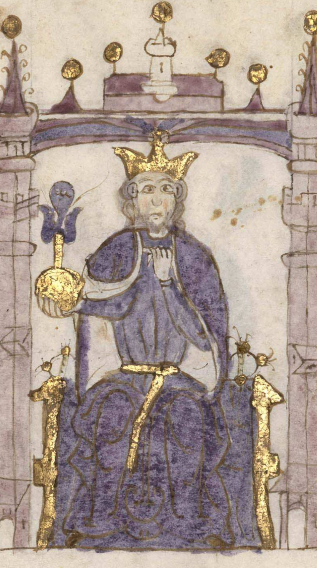
Sancho Garcés VI, called the Wise was King of Navarre from 1150 until his death in 1194. He was the first monarch to officially drop the title of King of Pamplona in favour of King of Navarre, thus changing the designation of his kingdom. Sancho Garcés was responsible for bringing his kingdom into the political orbit of Europe. He was the eldest son of García Ramírez, the Restorer and Margaret of L'Aigle.

García Ramírez, sometimes García IV, V, VI or VII, called the Restorer, was the King of Navarre (Pamplona) from 1134. The election of García Ramírez restored the independence of the Navarrese kingdom after 58 years of political union with the Kingdom of Aragon. After some initial conflict he would align himself with king Alfonso VII of León and Castile, and as his ally take part in the Reconquista.

María Asunción Rodés Serna, better known as Assumpta Serna, is a Spanish actress and author. Born in Barcelona, Serna has performed in 20 countries in six languages and is the recipient of more than 20 international awards.
"Ecce homo", is a phrase traditionally attributed to Pontius Pilate at the trial of Jesus.

The Jiménez dynasty, alternatively called the Jimena, the Sancha, the Banu Sancho, the Abarca or the Banu Abarca, was a medieval ruling family which, beginning in the 9th century, eventually grew to control the royal houses of several kingdoms on the Iberian Peninsula during the 11th and 12th centuries, namely the Kingdoms of Navarre, Aragon, Castile, León and Galicia as well as of other territories in the South of France. The family played a major role in the Reconquista, expanding the territory under the direct control of the Christian states as well as subjecting neighboring Muslim taifas to vassalage. Each of the Jiménez royal lines ultimately went extinct in the male line in the 12th or 13th century.

The County of Aragon or County of Jaca was a small Frankish marcher county in the central Pyrenean valley of the Aragon river, comprising Ansó, Echo, and Canfranc and centered on the small town of Jaca, an area now part of Spain. It was created by the Carolingians late in the 8th or early in the 9th century, but soon fell into the orbit of the Kingdom of Navarre, into which it was absorbed in 922. It would later form the core of the 11th century Kingdom of Aragon.

Monzón is a small city and municipality in the autonomous community of Aragon, Spain. Its population was 17,176 as of 2014. It is in the northeast and adjoins the rivers Cinca and Sosa.
Álvaro Giménez Candela, sometimes known simply as Álvaro, is a Spanish footballer who plays as a forward for Segunda División club Racing Ferrol.
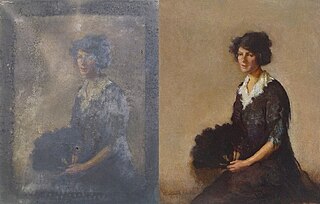
Artwork may be damaged or destroyed as a result of various types of accidents. Damage accidents sometimes occur during exhibition or transportation. Attempts at restoration have also damaged artworks, either by expert restorers using techniques that are found decades later to be unsuitable or harmful, or simple botches by unskilled people.

The Abbey of San Pedro de Siresa is a monastery in the Valle de Hecho,. It was constructed between the 9th and 13th centuries, and is the northernmost monastery in Aragon.

Fortún Garcés Cajal was a Navarro-Aragonese nobleman and statesman, perhaps "the greatest noble of Alfonso the Battler's reign". He was very wealthy in both land and money, and could raise two to three hundred knights for his retinue, funded both out of his treasury and enfeoffed on his lands.
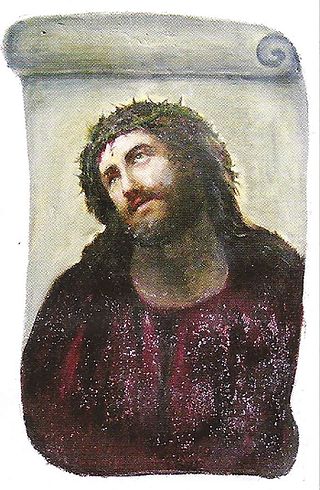
The Ecce Homo in the Sanctuary of Mercy church in Borja, Spain, is a fresco painted circa 1930 by the Spanish painter Elías García Martínez depicting Jesus crowned with thorns. Both the subject and style are typical of traditional Catholic art.
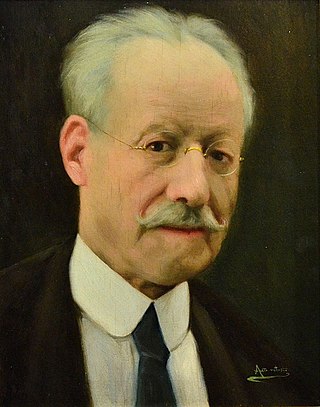
Elías García Martínez was a Spanish painter.
Pedro de Atarés was a Spanish noble and member of the House of Aragón. He founded the Veruela Abbey, the oldest Cistercian monastery in Aragon.
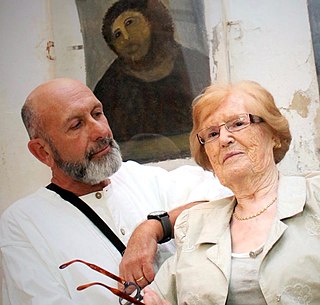
Behold the Man, La Ópera de Cecilia is a two-act, crossover musical comedy, in both English and Spanish, based on the true story of Cecilia Giménez and her failed 2012 restoration of the Ecce Homo fresco in Borja, Spain.
